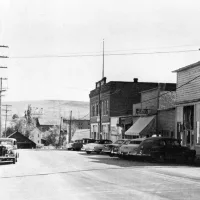
Oregon State Parks experienced its second busiest camping and day-use year in history during its centennial in 2022.
Visitors logged 2.97 million camper nights, which is 1.8% less than the record-breaking year in 2021. Parks tracked more than 52 million day-use visits, which is down about 2.7% from the record.
Camping by Region:
- Coast: Remained steady (.3% decrease)
- Valley: 7.8% increase
- Mountain: 11.9% decrease
- Statewide: 1.8% decrease compared to record-breaking 2021
Day-use by Region:
- Coast: 5% decline
- Valley: 4% increase
- Mountain: 3% decline
- Statewide: 2.7% decrease compared to record-breaking 2021
An increasing number of campers stayed close to the state’s largest population centers as gas prices continued to climb last summer. Overnight camping increased at valley region parks including Detroit Lake, Fall Creek, Champoeg, Willamette Mission and Milo McIver. Coastal parks remained steady with a mix of decreases in camping numbers at parks like Fort Stevens and increases at Cape Blanco, Cape Lookout and Alfred Loeb.
The mountain region saw an 11.9% decrease in overnight camping with the largest drops at Valley of the Rogue, Farewell Bend, Prineville and Cove Palisades.
Overall, Oregon State Parks continued to see near-record-breaking overnight stays in 2022 on its 100-year anniversary. Parks celebrated the milestone, not with large gatherings, but in quiet and meaningful ways.
- Celebrated Sarah Helmick State Recreation Site’s placement on the National Register of Historic Places
- Collected park-inspired artwork from visitors
- Encouraged volunteers to make a difference with 100 projects for 100 years and far exceeded the goal with more than 200 projects, 1,431 volunteers at 54 parks
Last year included challenges as well. Sustained higher visitation puts pressure on rangers at a time when hiring frontline staff has been very difficult. Oregon Parks and Recreation Department (OPRD) revenue has recovered from the pandemic, but hiring has been hard, due partially to shortages of housing in rural areas. OPRD is funded by a share of recreational vehicle fees, the state lottery and revenue earned by serving visitors, which declined sharply in 2020. This month, OPRD started its 2023 recruitment for frontline staff with the goal of filling all those roles.
Parks begins its next 100 years with $50 million in construction projects to improve aging infrastructure and protect Oregon’s resources at 11 parks. The work will also add visitor facilities and expand camping at several parks including Milo McIver, Silver Falls and Champoeg by 2026. The improvements were funded by general obligation bonds approved by the Oregon Legislature in 2021.
“We are incredibly grateful to our visitors, volunteers and partners and to all those who cherished and supported Oregon State Parks for its first 100 years. We know the next 100 years will bring challenges and opportunities, but we will meet them together with resilience and a sense of stewardship for these awe-inspiring places that belong to us all,” said OPRD Director Lisa Sumption.















